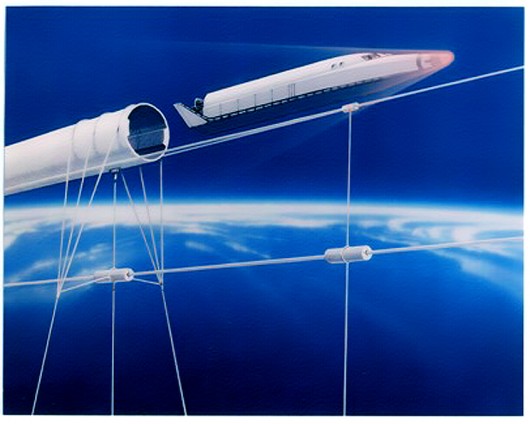
Getting into space via shuttle is difficult and expensive. So why not take a train? Startram is a magnetic levitation train that could — theoretically — launch people into orbit for a fraction of the cost.
Startram was developed in part by James Powell, one of the inventors of maglev technology. Maglev, if you’re not familiar, is some freaking stupendous train tech — maglev bullet trains can hit speeds of more than 350 miles per hour, making even the HOV lane look pretty silly. Using it for space launches wouldn’t save emissions like most train infrastructure, because it’s not like people are regularly commuting in space shuttles. But it could promote science by slashing the cost of space exploration.
Basically the Startram is a super-long maglev track inside a vacuum tube, which has one end magnetically raised so that a shuttle that shoots from the tube’s end gets fired right into orbit. Because the track is 1,000 miles long, the shuttle has plenty of taxiing time to accelerate to escape velocity, as opposed to a traditional shuttle launch where it has to get all the necessary momentum in one explosive hit.
What I really like about this concept is that it looks like the end result of an alternate history where we never abandoned large-scale train travel in favor of personal cars. Imagine a world where our first thought about getting around — commuting, cross-country travel, international travel, space shuttle launches — is “how can we do that by train?”



